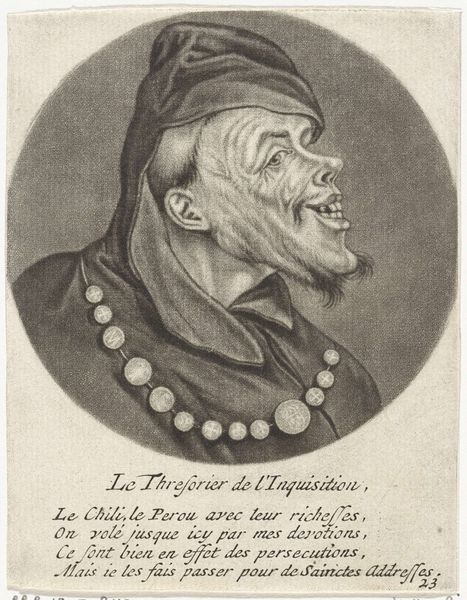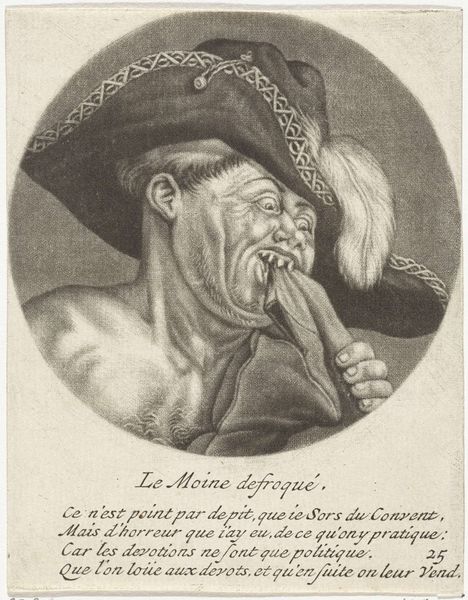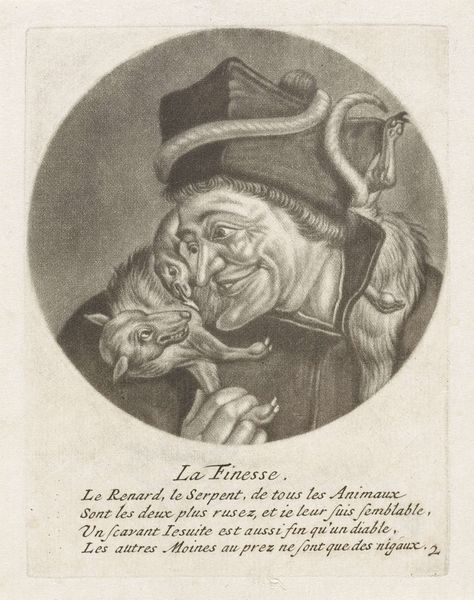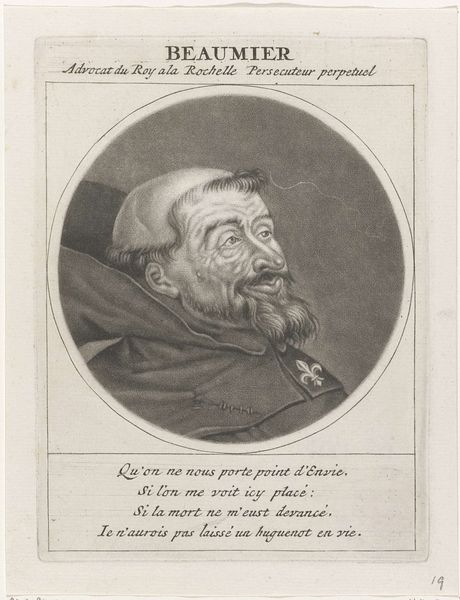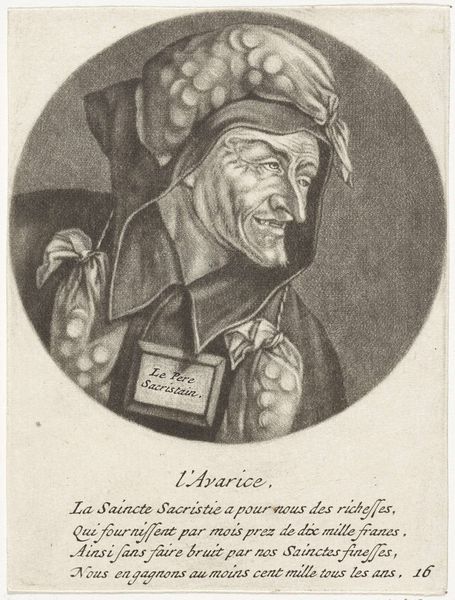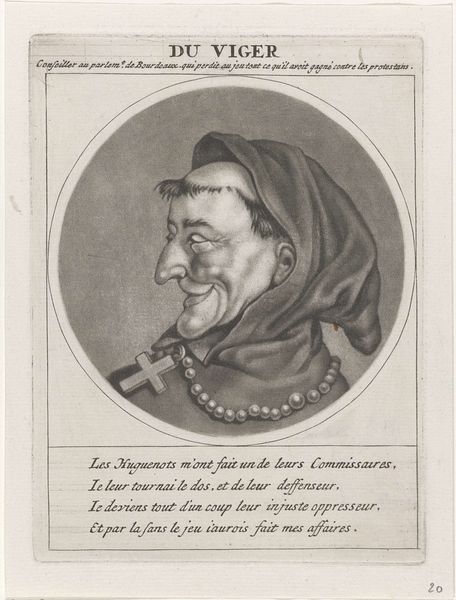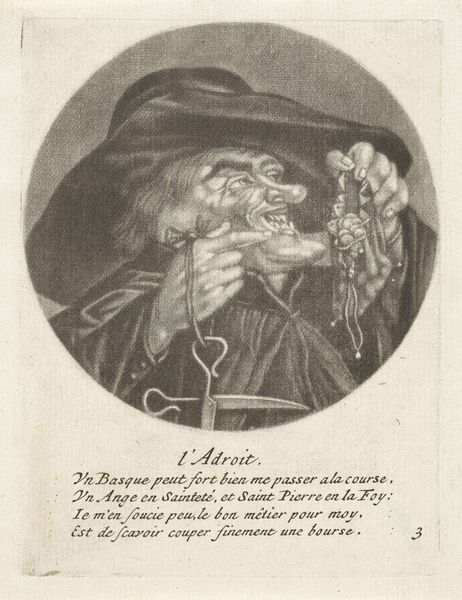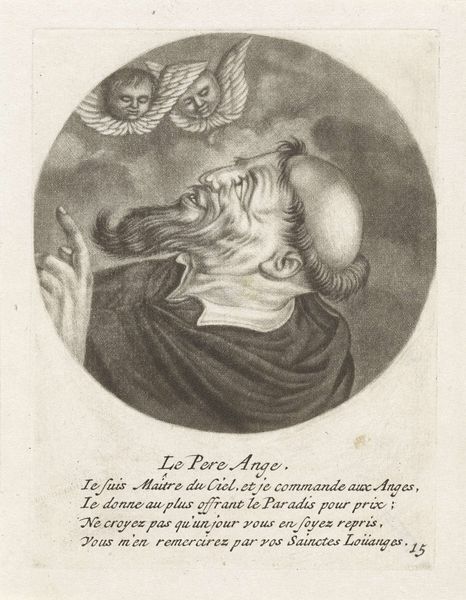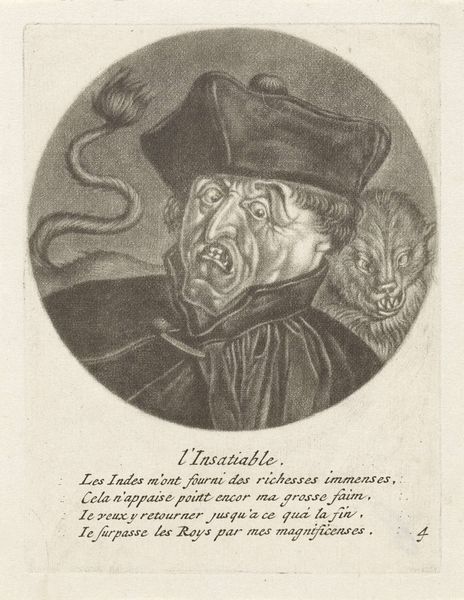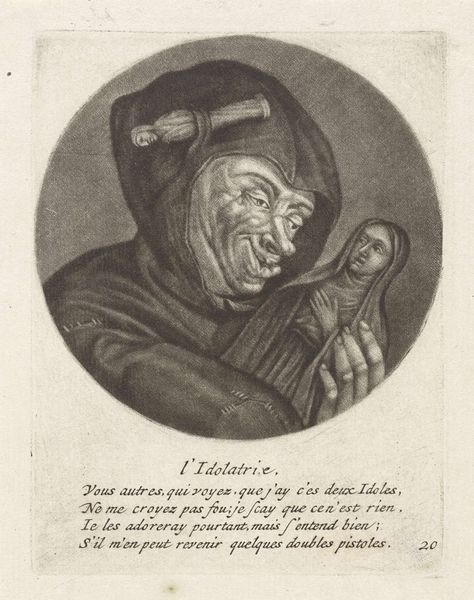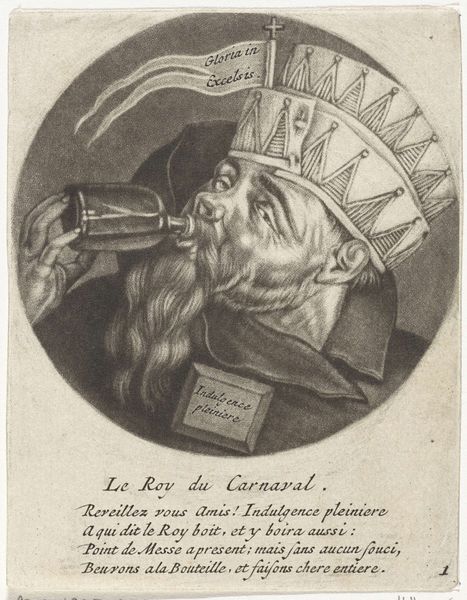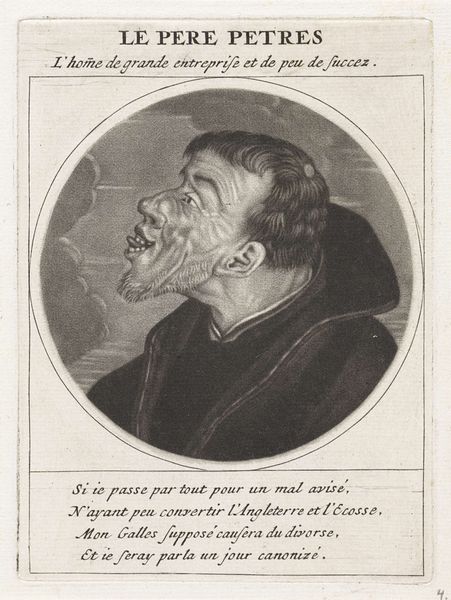
print, engraving
#
portrait
#
baroque
# print
#
caricature
#
old engraving style
#
engraving
Dimensions: height 115 mm, width 90 mm
Copyright: Rijks Museum: Open Domain
Editor: Here we have Jacob Gole's print, likely created between 1670 and 1724, titled "Monnik met vuur en water", or "Monk with fire and water" and also known as "Le Seditieux" as visible under the image in old French. It’s a rather striking Baroque engraving. The monk's grotesque expression and contrasting elements give off a darkly comedic vibe. What do you see in this piece, particularly in its historical context? Curator: This image is potent political commentary, using caricature to discredit religious or political opponents. Prints like these were critical tools for shaping public opinion during periods of intense religious and political strife in Europe. Gole isn't just depicting a monk; he's portraying a seditious figure, as the French title implies. The inscription even suggests this person is two-faced, telling two sides what they want to hear, flattering one and promising merveille but doing the contrary to the other's ear, holding "fire and water," ultimately meeting a fiery or sharp fate, "au feu et au couteau". Editor: So, it’s a statement about duplicity and manipulation? How does its public accessibility affect the message? Curator: Exactly. Prints were relatively inexpensive and could be widely disseminated. The caricature makes it memorable, and the symbolic elements, like the fire and water, offer multiple layers of interpretation for viewers across different social strata. This accessible format made it incredibly effective for spreading propaganda and reinforcing particular socio-political ideologies. Editor: It's fascinating how accessible art forms can be weaponized for political messaging. Curator: Indeed. Gole’s work underscores how visual culture participates actively in shaping and reflecting historical narratives and power dynamics. The Rijksmuseum would hold this to expose and teach about an old-timey propaganda art that reflects sociopolitical power at the time. It certainly made me rethink the power of a seemingly simple image. Editor: I agree, seeing it within that context has really changed my perspective on its role and impact. Thanks!
Comments
No comments
Be the first to comment and join the conversation on the ultimate creative platform.
